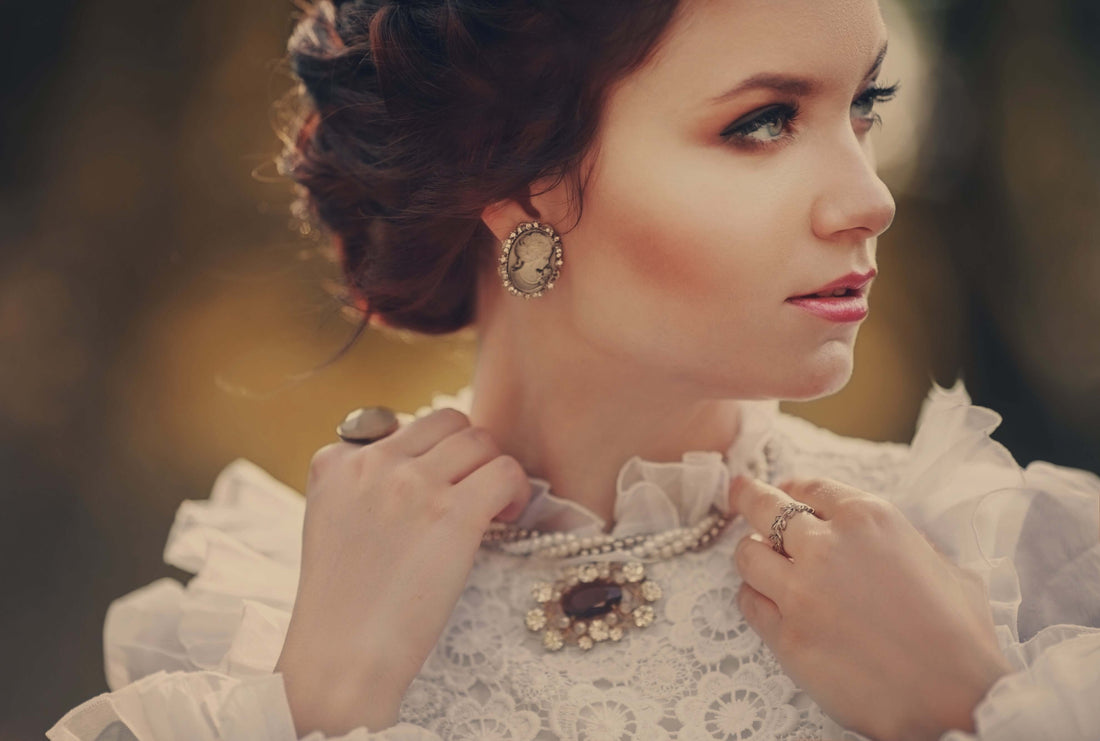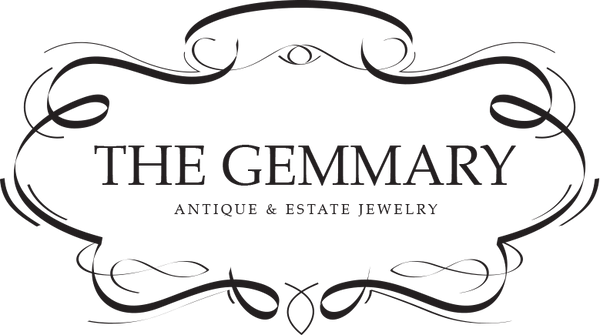
An Introduction to Edwardian Jewelry
"A leisurely time when women wore picture hats and did not vote, when the rich were not ashamed to live conspicuously, and the sun never set on the British flag."
-Samuel Hynes

Edward VII. Image: Shutterstock
After Queen Victoria died in 1901, Edward VII, then 60 years old, finally ascended to the British throne. A notorious playboy and gambler excluded from the political arena during his mother's reign, Edward VII was a socialite who enjoyed high-society soirees and living in luxury. Famously more light-hearted than his mother, Edward's lifestyle had a significant influence on British culture, permeating the fashion and jewelry of the era.

Diamond and Sapphire Edwardian Ring. Image: The Gemmary
Edward's relatively short reign was a period of frivolity and celebration for the upper classes, and the garden parties and social events of the day called for a shift from Victorian fashion. Women began to put away heavy, voluminous skirts and high, proper necklines in favor of lightweight dresses made from soft, pastel fabrics. While the Victorian era had seen a post-industrialization boom in machine-made jewelry, the Edwardian era brought handcrafted adornments back into style. Heavy, bulky designs were replaced by ethereal, gossamer pieces. Diamonds and pearls were set into thin strands of platinum in motifs of bows, garlands, lace, and florals, creating an airy look.

Diamond and 14K Miligrain and Filigree Dinner Ring. Image: The Gemmary
These styles were made possible mainly by the invention of the oxyacetylene torch, which could reach the temperatures necessary to work with platinum. Cartier, already an established brand, became a household name after becoming the official jewelry supplier to King Edward and pioneered the use of platinum in jewelry-making. Lightweight yet exceedingly strong, it proved an ideal material for delicate designs. A new decorative technique known as miligraining, which uses tiny balls and ridges of platinum to soften the edges of pieces, became incredibly popular.
The “white on white” trend added to the soft, feminine look of Edwardian jewelry. After DeBeers Consolidated Mines was founded in 1888, diamonds were abundant and relatively affordable, and many Edwardian pieces used multiple stone cuts. High-quality pearls became the status symbol of the day, and many women favored waist-length pearl strands. The dog-collar style of the necklace was another hallmark of the age, coordinating with the dropping necklines of dresses.

Moonstone and Silver Festoon Necklace c. 1905. Image: The Gemmary
Many women wore ornate or stacked rings, with less emphasis on bracelets than in Victorian times. Tiaras were a must-have for formal social engagements, as platinum allowed designers to create elaborate but lightweight crowns. The bandeau style of tiara—a band of jewels across the forehead tied in the back with a ribbon— gained traction. Hanging earrings swayed with the movement of dresses. Throughout many of these pieces ran the themes of garland, wreath, and lace motifs, white on white, and millegraining.

Diamond and Mixed Metal Drop Earrings with Garland Motif. Image: The Gemmary
King Edward died in 1910, but it was the start of World War 2 that more rapidly shifted fashions and priorities. Edward’s luxury and frivolity ended overnight as the war efforts began, and platinum and other precious metals used to manufacture weapons were no longer available for jewelry-making. However, Edwardian styles are still fashionable today, and platinum remains a beloved metal for the craft. Edwardian jewelry's light, feminine feel is the perfect finish to a wedding look or formal gown and exudes beauty and romance.
